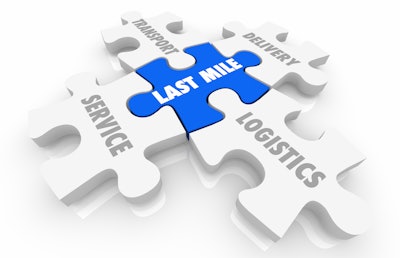
In the five years since COVID-19, the world has become aware of the complexity and fragility of the supply chain ecosystem as we witnessed the effects of disruptions including port strikes, natural disasters, weather events, political unrest and general outdated infrastructure. Often, it’s the first and last mile of a shipment’s lifecycle that is directly impacted, so improvements in this segment have the potential to help logistics companies better respond to and manage supply chain disruptions. Yet it is an area that is often overlooked and is prime to be better optimized.
The "landside container black hole” and the current state of first and last mile logistics
One of the biggest challenges in first and last mile logistics is the “landside container black hole,” when freight forwarders and their customers lose visibility into container movements once they enter domestic transport networks.
This "black hole” creates blind spots in carrier selection, shipment milestones, and cost management, leading to inefficiencies, delays, and unplanned expenses plaguing operations.
Globally, one in three supply chain professionals cite geographical tensions, cybersecurity attacks, natural disasters, and transportation disruptions as the top threats to supply chains. To mitigate these concerns about supply chain disruptions, the most common measure being implemented to ensure continuity is to establish flexible and multi-sourced supply chains with alternative transportation routes and partners, particularly for those responsible for North America (NA 37% / Global 33%). Yet the first- and last-mile leg is being overlooked. Today, the first- and last-mile process remains largely manual and fragmented. It’s often bundled with the ocean move, yet it operates within a completely different network of providers and is typically managed by a separate local team with port-specific expertise.
The decentralized nature of drayage management means decisions are made in silos, leading to ad-hoc carrier selection, often based on long standing relationships that aren’t always cost-effective, or performance driven.
For multinational logistics providers this can incur unnecessary costs and inefficiencies including:
· Siloed vendor selection and execution processes that limit opportunities for volume-based rate negotiations
· Untracked accessorial fees and hidden charges that erode freight forwarder margins or create unexpected costs for shippers
· Operational inefficiencies due to manual processes e.g. emails, phone calls, and terminal website checks
· High operational costs due to the resource-intensive nature of managing first and last mile logistics
Choosing a strategic, digitally connected approach
With the digital freight forwarding market projected to grow from $42.22 billion in 2025 to $113.03 billion by 2030, the industry's shift towards digital solutions to enhance efficiency and reliability is clear.
Freight forwarder adoption of a strategic and technology-driven approach to managing first and last mile container drayage sounds simple enough, right?
The key to success lies in creating a flexible, multi-sourced landside supply chain with alternative routes and partners that ensure continuity during disruptions. This can be enabled by choosing the right solution that fits your needs.
Let’s dive into the capabilities to look for.
Real-time tracking systems through GPS and IoT-enabled devices achieve the end-to-end visibility needed to combat the aforementioned “black hole.” These tools allow freight forwarders to monitor the movement milestones of containers at every step such as gate-out, delivery, gate in and more. This helps predict delays, optimize routes, and proactively manage exceptions during the first and last mile.
Automation and AI integration into the core functions of GPS and IoT are what improve operational efficiency. AI-powered route optimization software considers traffic, weather, and delivery windows to find the most efficient paths for shipments. This reduces fuel consumption, delivery times, and costs, especially crucial for the last mile, where many deliveries are made to diverse locations.
Integration of interconnectivity and interoperability across multiple areas of business via automation offers freight forwarders the ability to review and select improved carrier options based on preferred carrier(s), cost, and other KPIs. This integration can also better manage freight volumes based on carrier capacity, contractual commitments, and load allocation.
A look into the ideal world
The ideal world is centralized with complete control of the international container freight movement lifecycle – from origin to destination country. This provides full transparency regarding costs, helps establish a global, trusted network of providers, and allows for real-time visibility of the freight shipment from first mile pick-up, through the primary ocean leg to last mile delivery.
Choosing the right solution is critical for building a responsive, efficient, and customer-centric supply chain.














![Pros To Know 2026 [color]](https://img.sdcexec.com/mindful/acbm/workspaces/default/uploads/2025/08/prostoknow-2026-color.mduFvhpgMk.png?ar=16%3A9&auto=format%2Ccompress&bg=fff&fill-color=fff&fit=fill&h=135&q=70&w=240)




